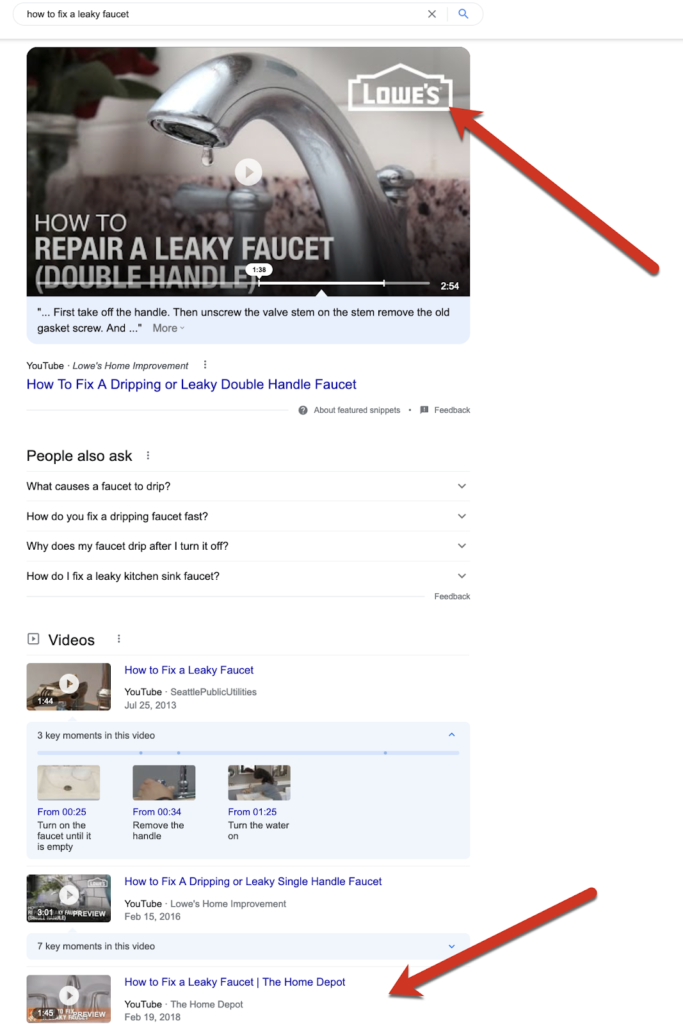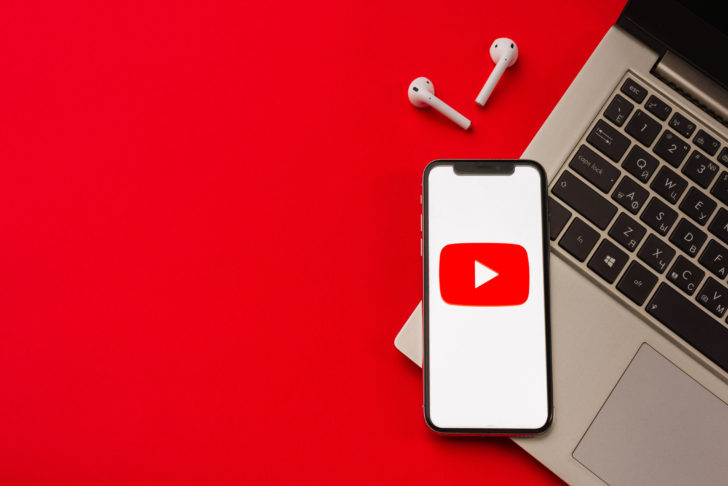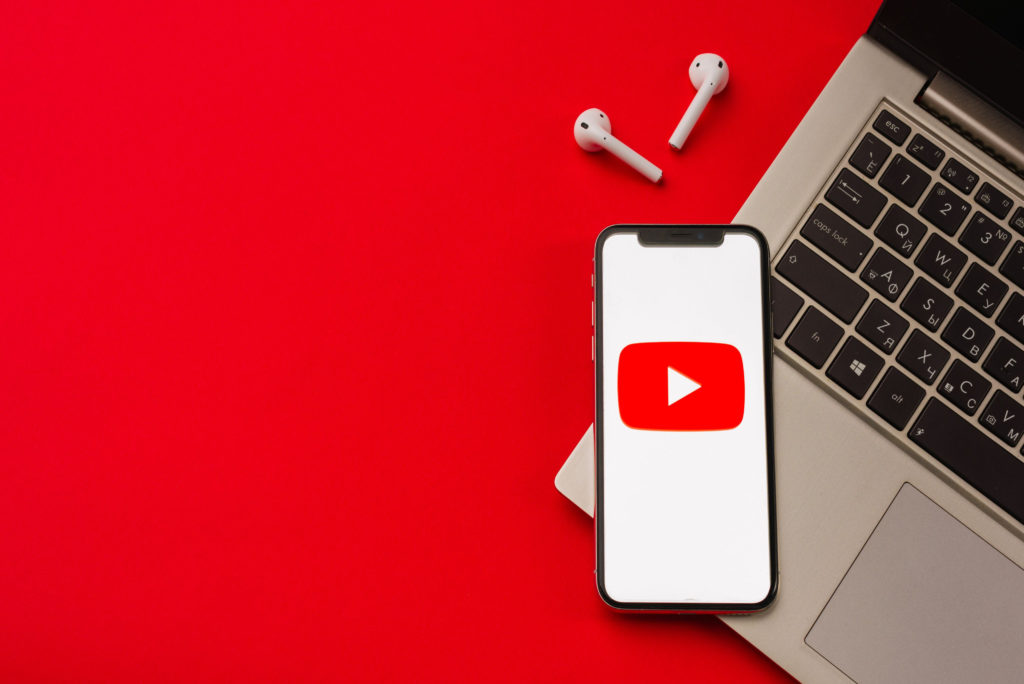30-second summary:
- Videos engage and convert, and they also rank incredibly well in organic search, making them the perfect medium for converting searchers into buyers
- Videos can help guide customers to your brand at stage of the buyer journey
- Here’s how to create video content that caters to each stage specifically
The process of acquiring a customer begins with your first contact. There are several stages a consumer goes through before becoming a customer and then a loyal customer. A buyer journey starts with identifying or expressing a need. This need then has to be fulfilled in some way or the other.
With over eight billion searches per year, real buyer journeys are complicated and may take weeks or months. However, to simplify things, here is a snapshot of the key stages a person goes through to become your customer. Since nearly 68 percent of online experiences begin with a search engine all these stages can very well happen in Google itself:
- Awareness: when a consumer finds out that you have a solution to a problem, they wish to be solved. In many (but not all) cases, this searching journey starts with a “how to” query.
- Consideration: when a consumer adds you to the list of prospective solution providers
- Decision: when a consumer believes you have the best solution and becomes a paying customer.
Businesses need to help consumers make the right decision by providing information, assistance and instilling trust in your brand through the process.
With video content showing up all over search results, it makes sense to use videos for all these three stages in the consumer’s journey. The best thing about videos is that they rank incredibly well, especially if you host them on YouTube and practice video optimization.
The two distinct sections where video can assist your potential customers at each stage of a buying journey are:
- Featured snippets: When Google includes a video in a featured snippet, that’s a strong signal that people are searching for a video tutorial to solve their problem. If that’s your target search query, creating a video is a must, especially when optimizing for the “awareness” stage in the funnel.
- Video carousels: Google includes video carousels when a video intent is implied. It is not at all difficult to rank your video there, especially when it comes to specific (low-search-volume) queries, like brand-driven queries.
Here’s an example of both of these sections ranking on the very top of the search result page, pushing organic results way below the above-the-fold part of the screen. Notice a very-well branded video by Lowes being featured for a very relevant – albeit longtail – query. I bet this generates quite a few leads for them. There’s also another brand – The Home Depot – ranking its video in the carousel below. Looks like, both of these brands are doing their homework well:

There are many different kinds of video content that can be used at each specific stage. These videos help to encourage the consumer to continue their journey with you rather than with your competitor.
Awareness
As the name suggests, this video optimization strategy ensures that your target customers become aware of your brand.
The types of video marketing content that work best at this stage of the funnel include:
Make sure your videos are well-branded to build recognizability: Use your logo and color palette on your video thumbnail, as it is going to show up in search results.
Once the awareness has been created, it is time to consolidate all that effort and transition your consumer to the next stage of consideration.
Consideration
You can enhance your customer experience at this stage through videos that position your product in a way you want it to be positioned. A good reason to use videos at this stage is that they put your product in a real-life context, that is, they show exactly how other people are using your product.
The most effective videos for this stage are:
- Explainer videos to introduce your consumer to the product and describe what you offer in detail. The explainer videos present the problem, discuss how your company can prove the solution and highlight the features of the product and its benefits to the consumer. Think of these videos as lead magnets: You want them to provide value, not just talk about your product.
- Product demo videos to explain how a product or service works in detail. They highlight all the advantages of using the product in an easy to understand format. They often use step by step instructions to show how to use the product and may include some innovative ideas about where to use it. A good script and excellent presentation make it a standout product demo videos of all time. It is a good idea to create an on-site video gallery on your site to share these demos with your site visitors. Videos do slow down your pages, so mind your page load time when using embedded content.
- Storytelling videos to show a lighter side of your business, humanize it to make it connect with the consumer. These videos tell a story about your business, its hopes, aspirations, and values. Usually, company employees and executives speak about the company, their experiences with it and their work. They are designed to create an emotive response that will strengthen the consumers’ relationship with your company.
As all of these videos are supposed to be ranking in Google, make sure to match them to the actual search queries that have higher commercial intent.
Decision
The third stage of the consumer’s journey is convincing the interested consumer that your product or service offers the best solution to their problem.
This is the stage where the consumer is already committed to buy and needs a gentle nudge in the right direction. This is the time when you need to emphasize on trust-building so the consumer trusts your brand and buys your product. The most effective videos at this stage are peer testimonials and reviews.
- Video testimonials: These are the best types of videos for trust and confidence-building in your potential customers and a must for the final stage of customer acquisition which is lead conversion.
- Customer-driven storytelling videos showing how your customers use the product in a more creative context.
Your target search queries for these types of videos include:
- Your product and your brand name: If you have an established brand (or if you are working towards that), your brand name is being searched in Google, and these videos will ensure you’ll have yet another asset you control in brand-driven SERPs. If you are doing a good job tracking your brand in organic search, you already know your important brand-driven search queries.
- Competitor-driven search queries: These are search queries exploring your competitors’ alternatives and comparing two competitors.
These videos should also be reused in two important ways:
- Embed them on your key landing pages: Video content is a well-known way to boost conversions but in this case it is a good way to help your customers feel at home as they will see the same video on the page after clicking the link on YouTube. It is also a good idea to curate these videos on your dedicated customer reviews page.
- Use these videos for your remarketing campaigns. You can use retargeting on YouTube to serve them to people who already went through stage #2 in the buying journey but haven’t converted yet.
Conclusion
Using videos in your organic search strategy to engage customers at each major stage of their buying journey is one of the best examples of how SEO and sales can help each other. Include videos in both SEO and CRO strategies and you will likely see much better results on both fronts.
Ann Smarty is the Founder of Viral Content Bee, Brand and Community manager at Internet Marketing Ninjas. She can be found on Twitter @seosmarty.
Subscribe to the Search Engine Watch newsletter for insights on SEO, the search landscape, search marketing, digital marketing, leadership, podcasts, and more.
Join the conversation with us on LinkedIn and Twitter.








